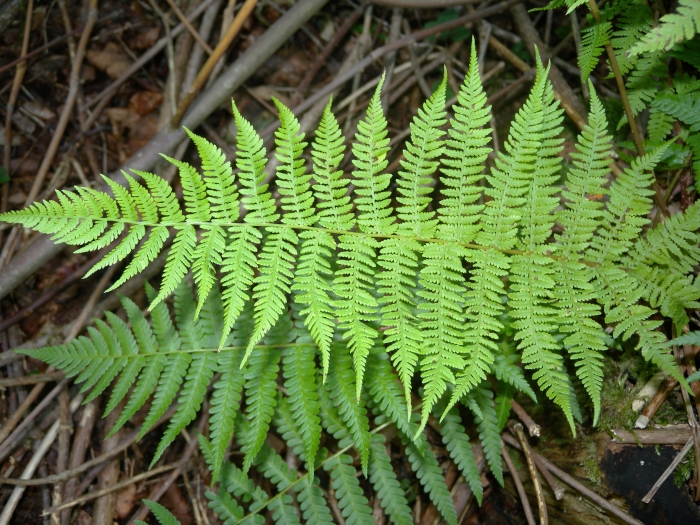Male Fern
(Dryopteris filix-mas)
Male Fern (Dryopteris filix-mas)
/
/

MurielBendel
CC BY-SA 4.0








































































Estimated Native Range
Summary
Male Fern is valued for its hardiness and adaptability, making it a popular choice for shaded garden areas, woodland plantings, and as a naturalizing species. It provides texture and greenery to shaded gardens and is relatively low maintenance, requiring minimal care once established. It is also used for its ability to hybridize with related species, such as Dryopteris affinis and Dryopteris oreades, which can result in a variety of interesting cultivars. In cultivation, it thrives in part shade to full shade and prefers consistently moist, well-drained soil. While it is generally pest and disease-free, it can occasionally suffer from fungal issues in overly wet conditions.CC BY-SA 4.0
Plant Description
- Plant Type: Fern
- Height: 2-3 feet
- Width: 2-3 feet
- Growth Rate: Moderate
- Flower Color: N/A
- Flowering Season: Non-Flowering
- Leaf Retention: Deciduous
Growth Requirements
- Sun: Part Shade, Full Shade
- Water: Medium
- Drainage: Slow, Medium, Fast
Common Uses
Border Plant, Deer Resistant, Drought Tolerant, Low Maintenance, Potted Plant, Rabbit Resistant, Rock Garden, Salt Tolerant, Street Planting
Natural Habitat
Deciduous forests, damp shaded areas, often found under the canopy of trees
Other Names
Common Names: Male Shield Fern, Male Wood Fern, Male-Fern, Worm Fern, Almindelig Mangeløv, Gewöhnlicher Wurmfarn, Gemeiner Wurmfarn, Kivikkoalvejuuri, Dryoptère Fougère-Mâle, Dryoptéride Fougère-Mâle
Scientific Names: , Dryopteris filix-mas, Nephrodium filix-mas var. crenatum, Aspidium filix-mas var. blackwellianum, Dryopteris filix-mas f. filix-mas, Dryopteris filix-mas var. pseudorigida, Filix vulgaris, Lastrea propinqua, Nephrodium nemorale,
GBIF Accepted Name: Dryopteris filix-mas (L.) Schott